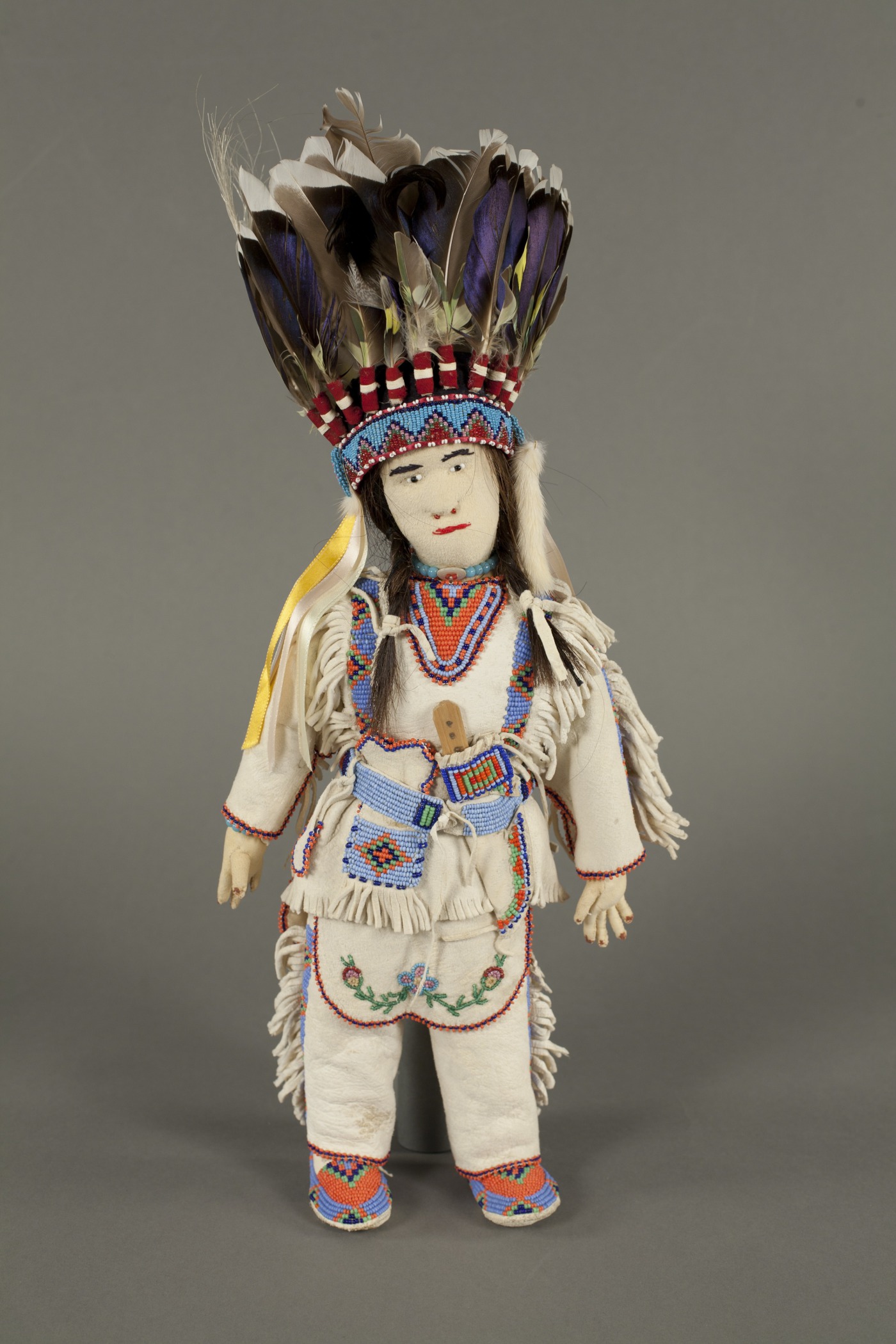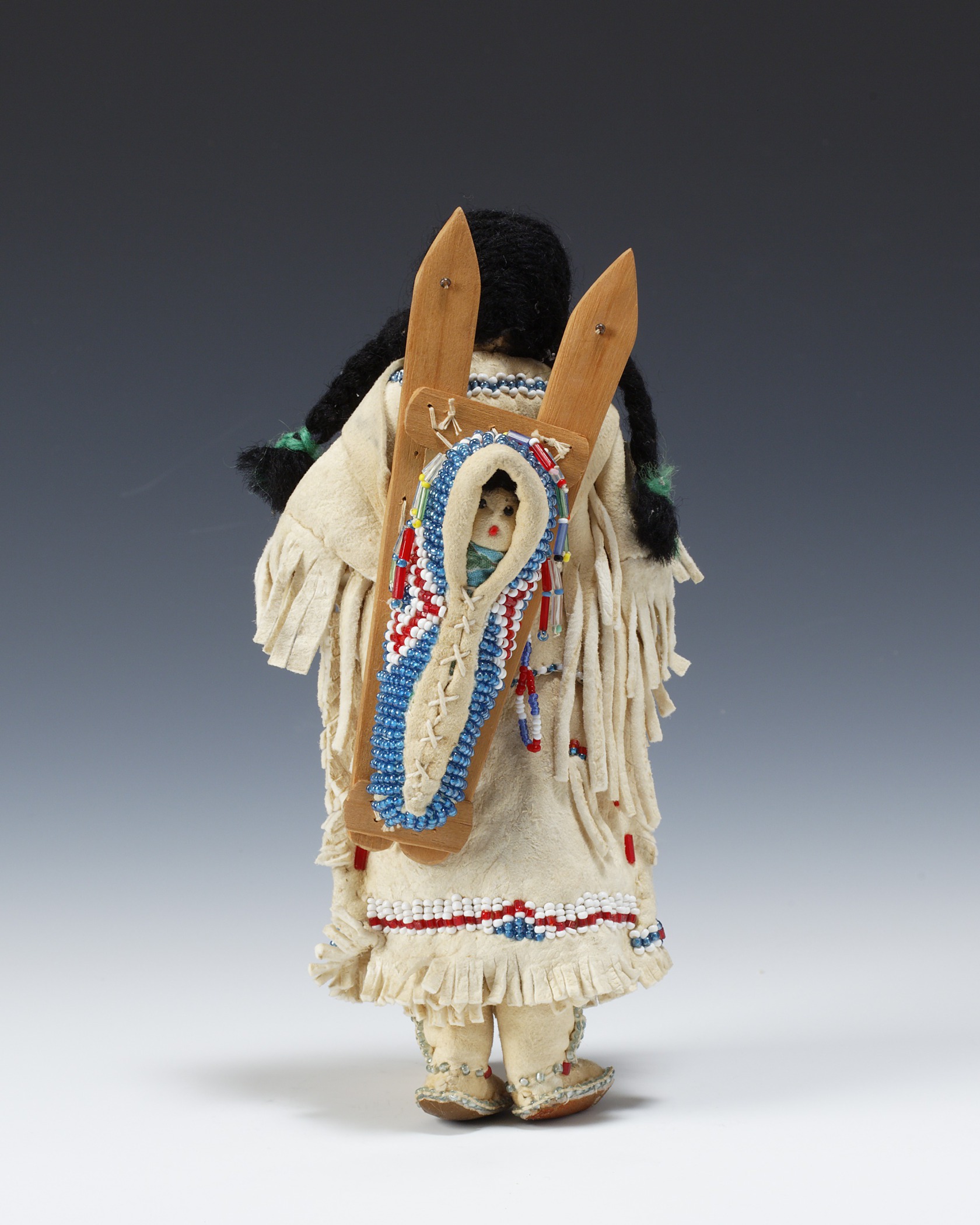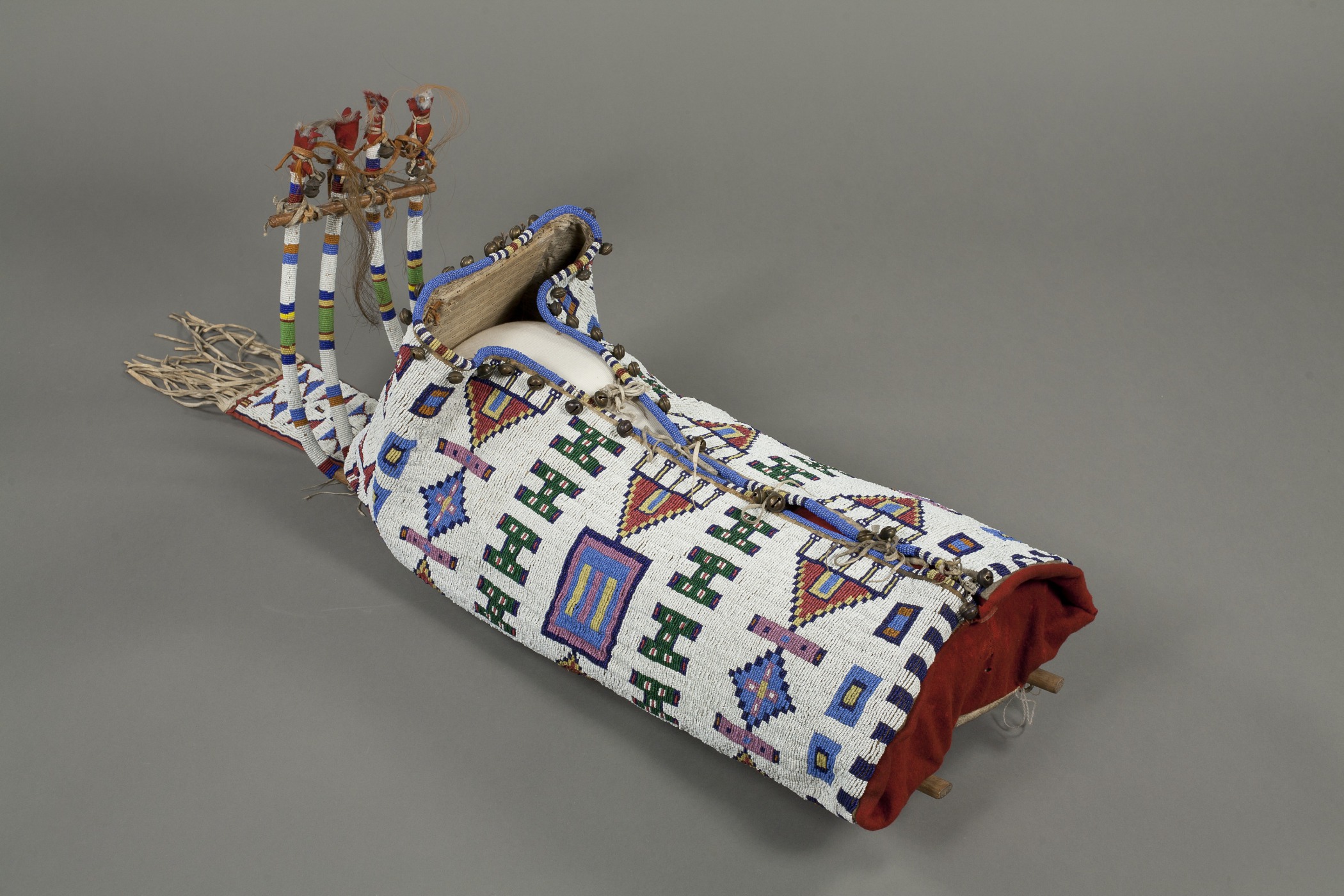American (Tsistsistas), active late 19th century
Untitled (A Tsistsistas [Cheyenne] Couple Wrapped in a Courting Blanket), page 192 from the Old White Woman Ledger
- About 1880–90
- Graphite, colored pencil, and watercolor on wove ledger paper
- Sheet (irreg.): 7 5/16 × 11 13/16 in.
Hood Museum of Art, Dartmouth College: Mark Lansburgh Ledger Drawing Collection; Partial gift of Mark Lansburgh, Class of 1949; and partial purchase through the Mrs. Harvey P. Hood W’18 Fund, and the Offices of the President and Provost of Dartmouth College; 2007.65.71
visibilityLook & DiscussMany Plains artists used record-keeping paper, known as ledger paper, as a drawing material because it was one of the first forms of paper to arrive on the Plains in the nineteenth century.
This ledger drawing shows a courtship ritual common to many Plains cultures. According to custom, if a young man was interested in a woman, he would wait for her on a path she frequented. If she returned his interest, she would look at him or speak to him. The young man would then place the blanket he carried over both of them, indicating that they were now a couple. If she was not interested, she would simply walk away.
explore the object
In this image, the artist has focused only on the upper bodies of the young couple. By cropping the image, he creates a sense of intimacy.
Young women were closely guarded and protected by their families on the Plains. Only men who had proven themselves in battle or on raids could court young women. They had to show that they could provide for a family. As a result, men were often older than their wives. If a woman and her family accepted the suitor, he had to provide a “bride price,” or gift of horses or other valuable items to her family. The wedding involved the whole community, feasting, dance, and ceremony.
Related Objects
There are several objects in the museum’s collection that relate to courting.
American (Southern Tsistsistas), active late 19th century, Untitled (Three Tsistsistas [Cheyenne] Women and a Man and a Horse), page 154 from the Arrow’s Elk Society Ledger, about 1874–75. Graphite and colored pencil on laid ledger paper, 6 1/16 × 14 3/4 in. Hood Museum of Art, Dartmouth College: Purchased through a gift from Mary Alice Kean Raynolds and David R. W. Raynolds, Class of 1949, in honor of Susan and James Wright, 16th President of Dartmouth College; 2008.71.3.
In this ledger drawing, a young warrior waits for a pair of sisters on the path they take to collect water. Hoping to impress, he has dressed himself and his horse in their finest clothing. The sisters, who have identical face paint, are dressed in brightly colored clothing and accompanied by a chaperone, an older woman in darker clothing. The young women have placed their buckets down on the ground and stopped to flirt with the handsome young man. The man, who is also the artist, has come to be known as “Arrow” because of the arrow he uses to sign his work (seen here in the upper right corner.) He has identified the girls with their names, written in a picture form, called a pictograph or glyph, above their heads.
Robert Ridge Walker, American (Northern Tsistsistas), about 1860–about 1965, Untitled (A Northern Tsistsistas [Cheyenne] Courting Couple), from a Robert Ridge Walker ledger, 1901. Graphite and colored pencil on small wove notebook paper, 7 7/16 × 5 3/4 in. Hood Museum of Art, Dartmouth College: Mark Lansburgh Ledger Drawing Collection; Partial gift of Mark Lansburgh, Class of 1949; and partial purchase through the Mrs. Harvey P. Hood W’18 Fund, and the Offices of the President and Provost of Dartmouth College; 2007.65.79.
In this image, a courting couple wrapped in a colorful blanket visits with a woman who pops her head out of a tent. Nearby, a log cabin and a tipi are visible.
Ka’igwu (Kiowa), flute with a carving of a bird, collected 1902. Wood, native-tanned leather, glass bead, sinew, buckskin, and paint, 21 7/16 × 1 5/16 in. Hood Museum of Art, Dartmouth College: Bequest of Frank C. and Clara G. Churchill; 46.17.9862.
Plains warriors also used music to encourage a young woman’s affection. This is a fine example of a “love” or courting flute. It was made by a Ka’igwu (Kiowa) artist around 1902. A suitor would play the flute outside a young woman’s home to let her know of his interest. This flute is decorated with buckskin bindings and a small carved bird, painted red, green, and yellow.




